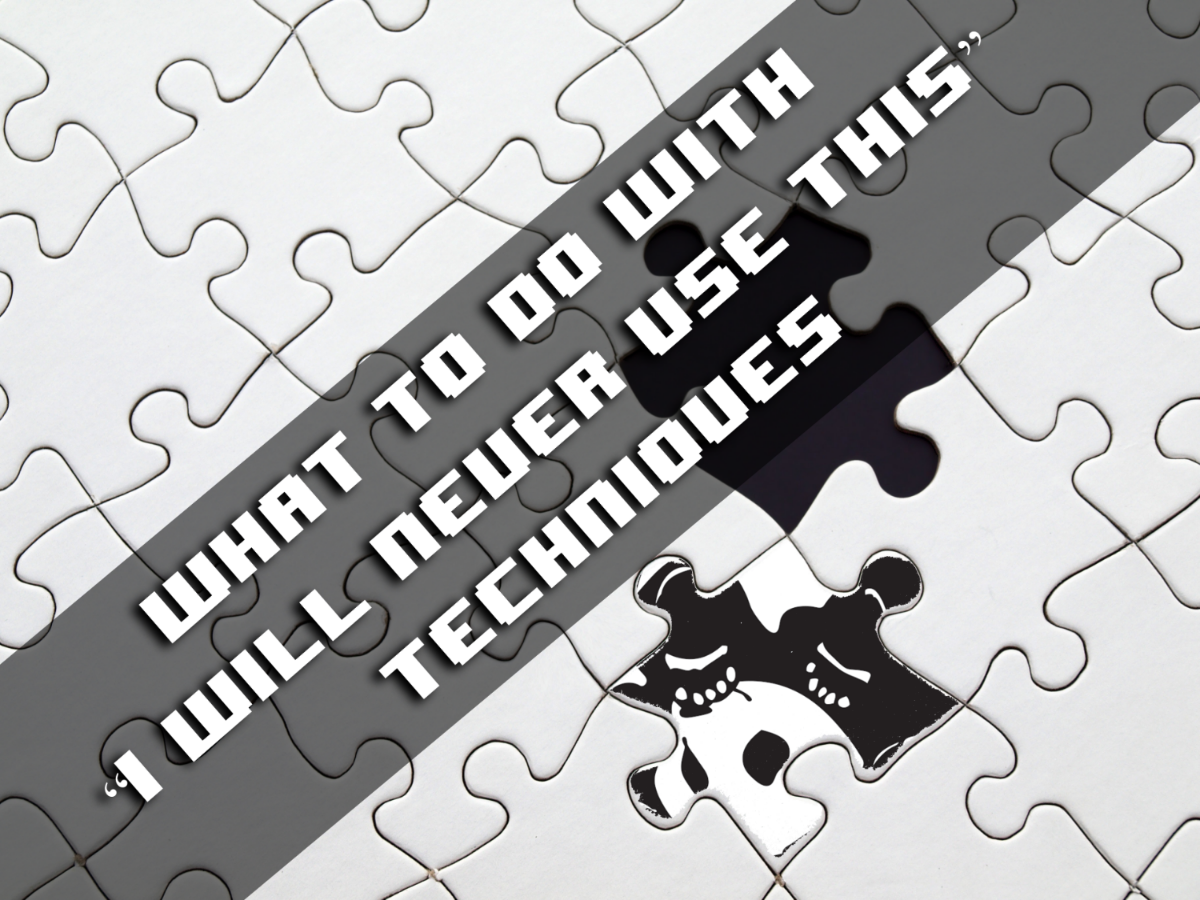
What to Do with “I will never use this” Techniques
When I was an angsty white belt and later an angsty blue belt, I took my training so seriously that I looked at every class as an opportunity to add another missing piece to my jiu-jitsu game. By wanting to improve so badly, I would sometimes step on to the mat, see the move being taught, and think to myself:
“I will never use this.”
The exact reason I thought that varied. Sometimes the move was too complicated for me. Sometimes it didn’t fit into my game. Sometimes I just didn’t like it. As I’ve matured—somewhat as a person but mostly in terms of how I think about jiu-jitsu—I now realize that this perspective is not only shortsighted, but it can be detrimental to a jiu-jiteiro’s development.
Here’s why:
- A move that doesn’t fit into your game today can reappear as a critical technique years later. I have often drilled a move, wrote it off as irrelevant, and then built up the prerequisite knowledge (unbeknownst to me) to make it not only useful but game-changing down the road.
- Even if you never use it, understanding how a move works is an important part of defending against it when the technique is used on you or if you need to troubleshoot the technique for a future student.
- Your instructor may have a vision for a learning experience that you just don’t see yet. Your instructor is teaching the movement for a reason, so have faith and commit to giving it your best. You might discover that the various lessons unite in the end.
- Jiu-jitsu for the sake of fun matters as well. It’s good for your development and for your spirit to try new techniques and to play with moves that might be goofy or outside of your usual style. Taking your training seriously is important, but you should also step back once in a while and goof off a bit.
Once you make the mindset shift—and I hope it is easier for you than it was for me—a new set of training behaviors should sprout as a result. When you leave behind the “I will never use this” attitude, you should add the following practices to your training routine:
- Work to perfect the execution of every technique taught during a class. Even if you do not immediately see its value, put focused effort into your repetitions.
- Experiment with the technique. Take the time to toy with the new idea, talk through its application with your training partners, and mess around with using it on lower belts. The “aha!” moment might be closer to the surface than you think.
- Review the techniques you learned in class. Regardless of how you plan to use it, use some open mat time to go over the moves you have recently learned. This review will solidify the knowledge in your memory (more than if you never drilled it again), making the ideas more likely to resurface when you need them later.
Jiu-jitsu knowledge can be a strange force. The volume of technique and the variety of styles and positions combined with the informal nature of curriculum structures means that no one gets to experience the perfect jiu-jitsu lesson plan. Many of your biggest insights will come from piecing together seemingly disparate chunks of knowledge, but you will never arrive at that insight if you throw puzzle pieces away.
Other articles:
Quick links
Contact us
About us
Quality BJJ gear at fair prices, available all year. Founded in 2012 to provide an alternative to high-cost, limited edition gis. Dive into the BJJ lifestyle with us—join the Panda Nation!"
